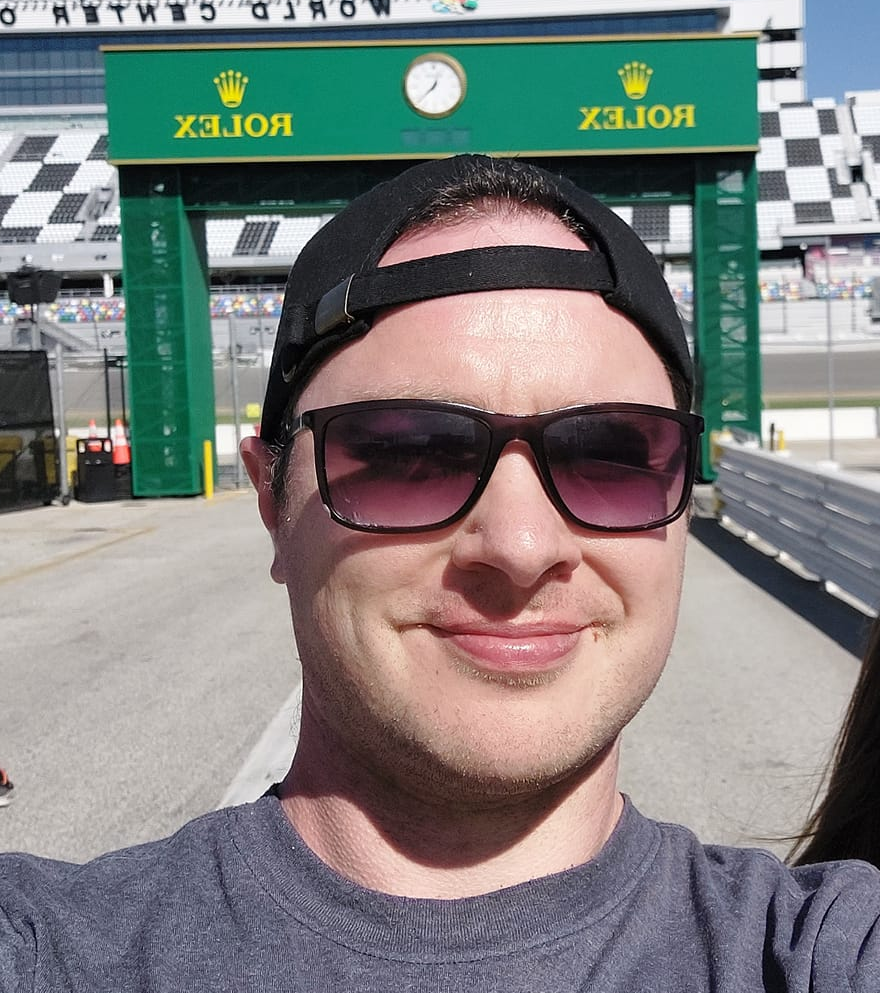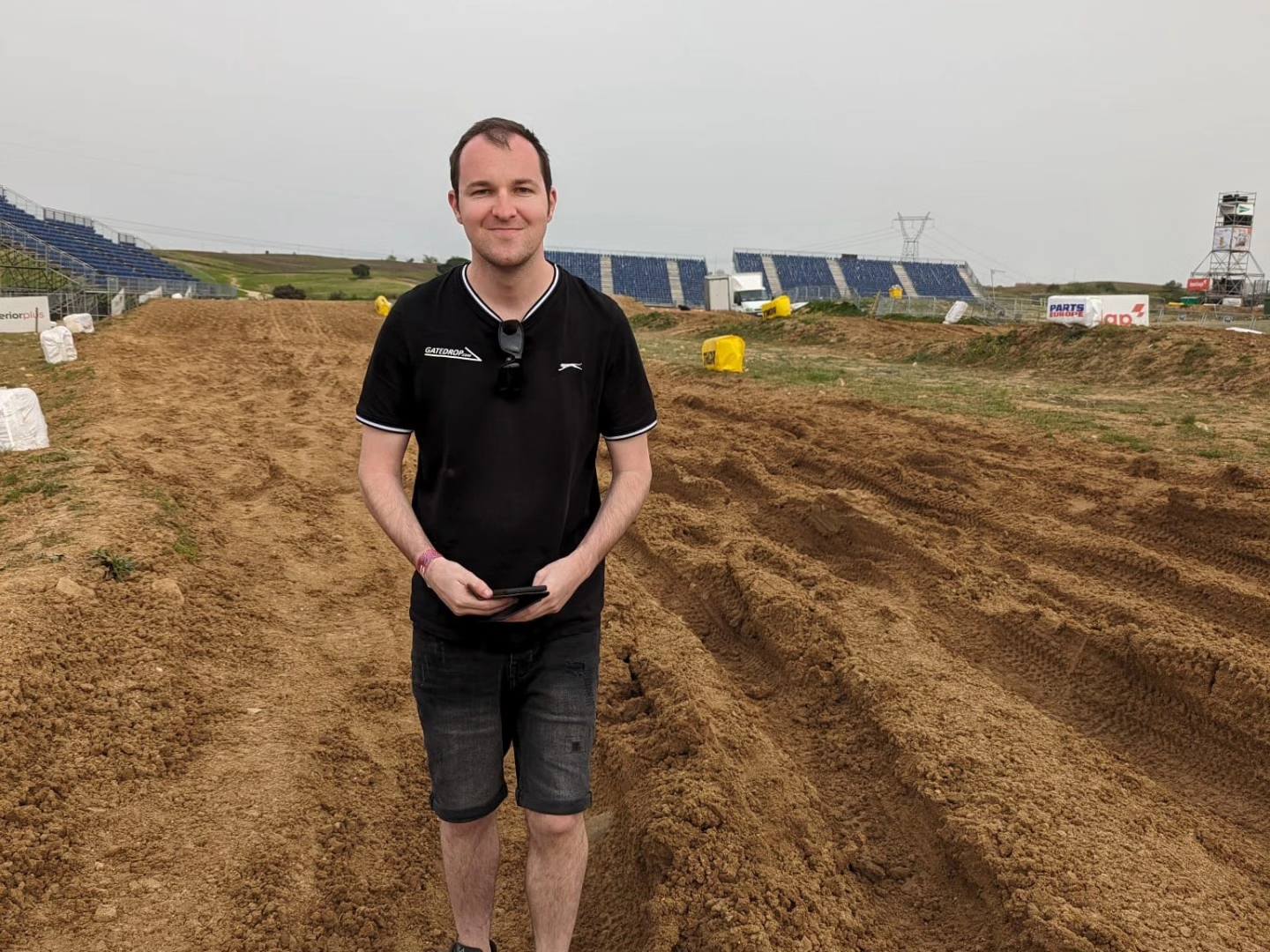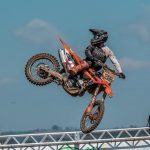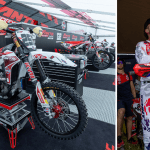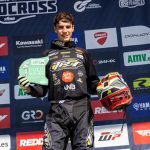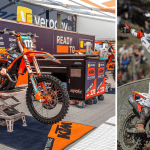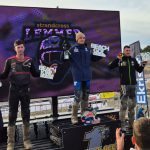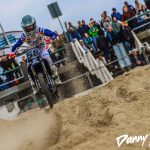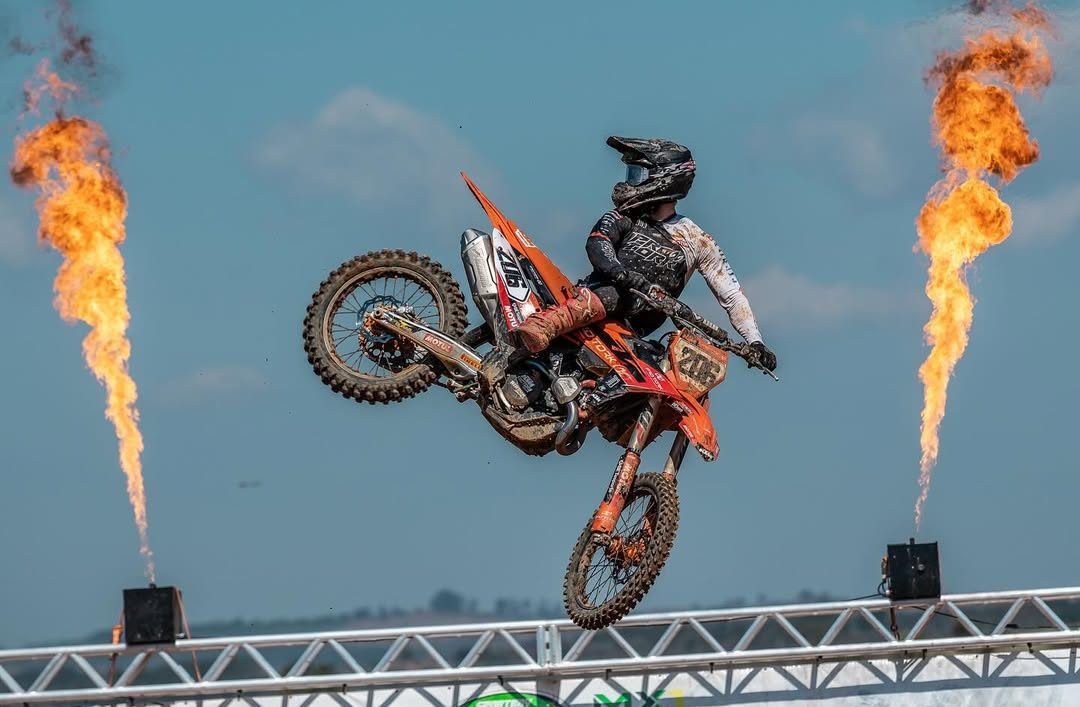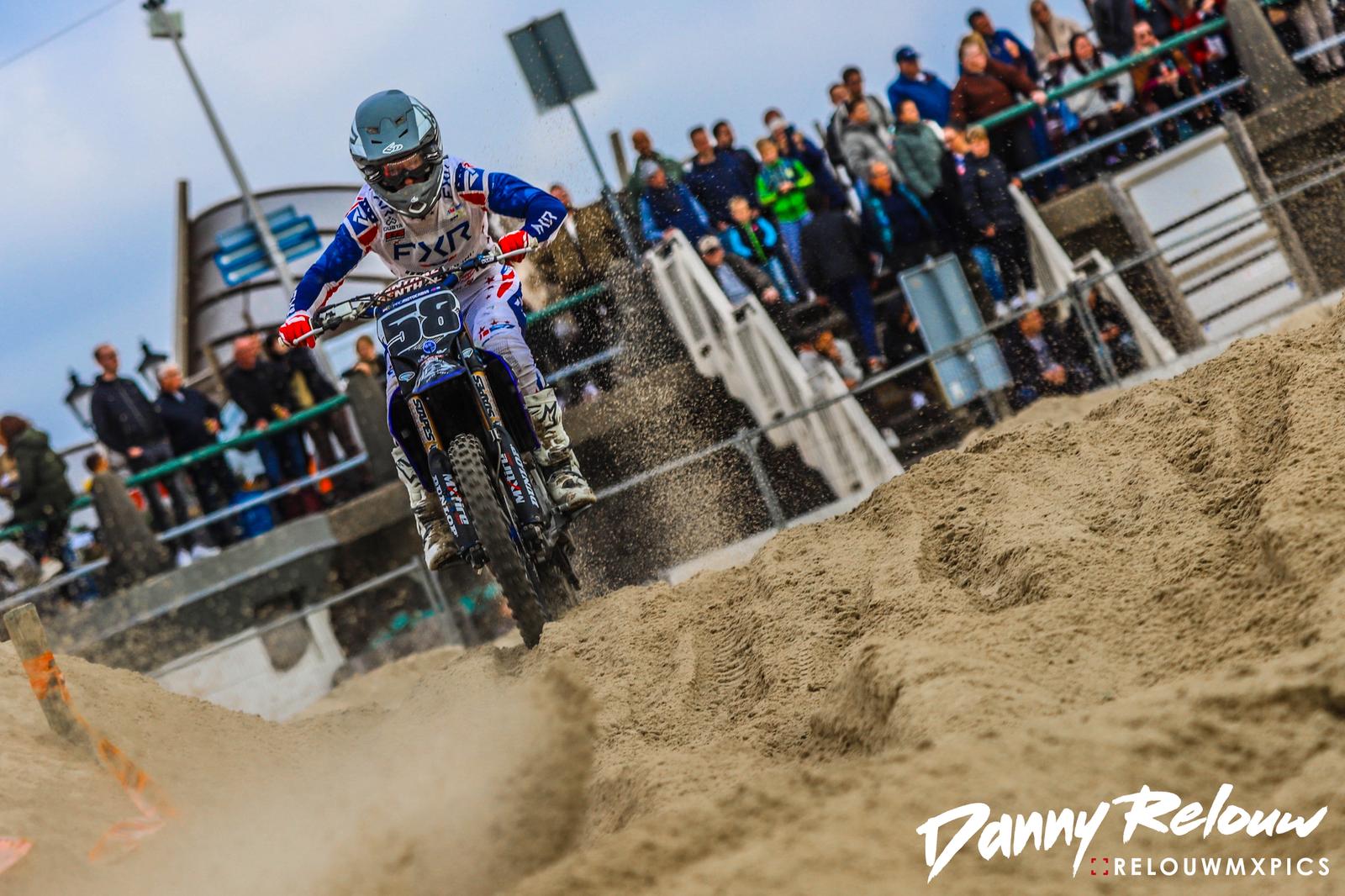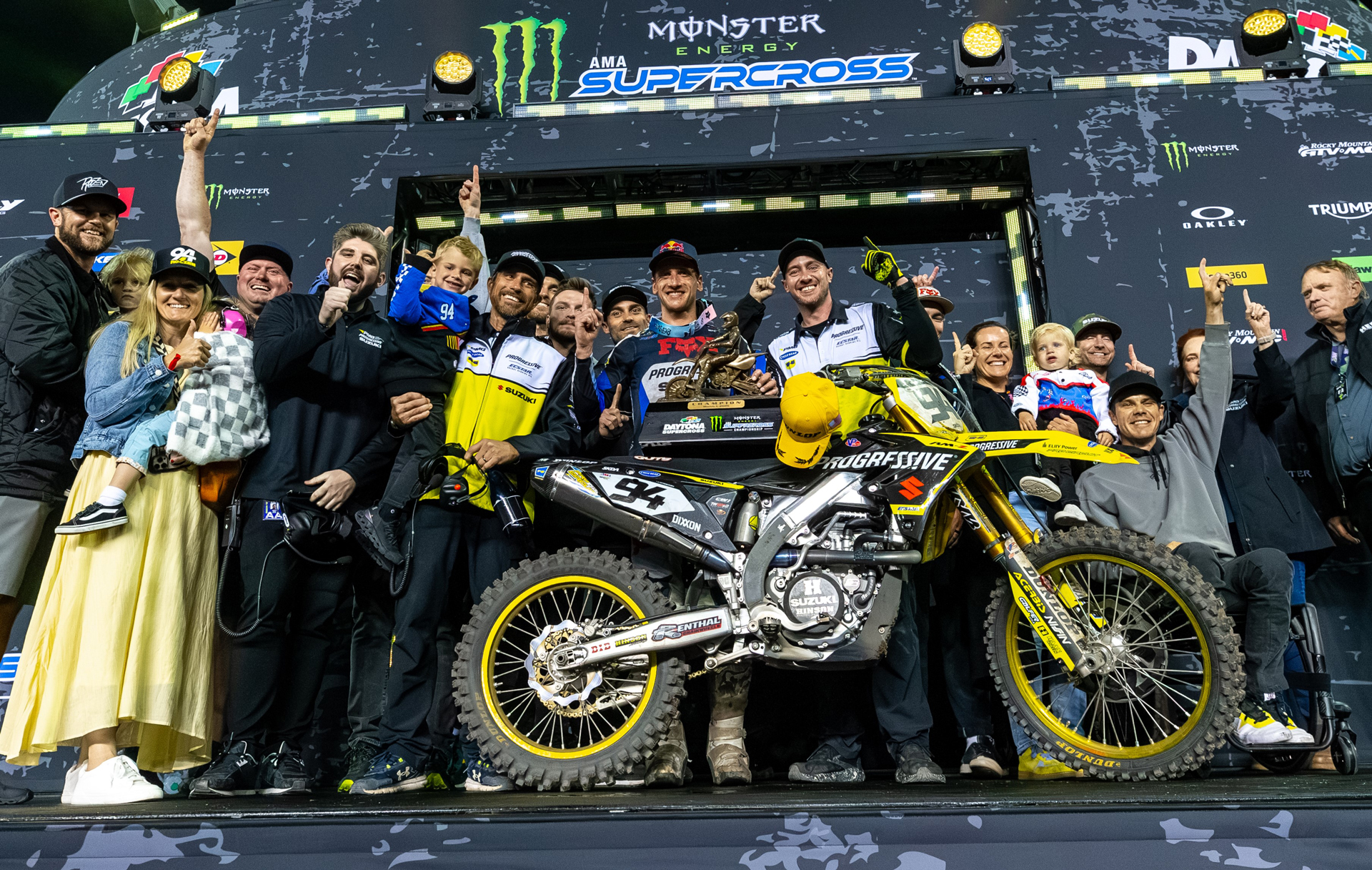After a season full of challenges racing in Brazil, Greg Aranda reflects on his journey to the Brazilian championships and what it’s like to ride in one of the most physically demanding and competitive motocross environments outside Europe. From torn shoulders and broken ribs to battling top local talent and legendary international riders, he gives an inside look at the professionalism, intensity, and culture of Brazilian motocross – and how it compares to the French scene he knows so well. In this interview with Kevin Frelaud, he also touches on the realities of racing for career opportunities, the allure of international series, and his plans for the years ahead.
Greg, when the announcement of your participation in the Brazilian championships came out, I thought it would be over quickly, at least in Arenacross. Then there was Dean Wilson and Enzo Lopes, but also Rubini and Van Horebeek in MX. Did you expect the level to be this high, in the end? It wasn’t that easy for you. Tell me about it…
Aranda: For sure. Then, I hurt my shoulder before leaving. Every surgeon in France wanted to operate. When I sent my MRI results to Brazil, they asked me to come because they had a surgeon. I went there, three weeks before the season opener. I couldn’t even lift my arm – I had torn my supraspinatus tendon. I also had three broken ribs. I told them it was going to be complicated, but I went anyway. The surgeon there did shoulder injections, did some work on my nerve; I don’t really know if he devitalized it. But anyway, he was giving me injections every 10 days so I wouldn’t feel pain.
So, I started the season like that, without training. I was supposed to have surgery, so I hadn’t ridden for a month already. From there, I began the season, with the first race in the mud. It wasn’t too physical, more technical. A slippery track, but also hard, because they had removed all the debris on top. Those are conditions I like. I derailed in the first moto and won the second. Not bad for an opener under those conditions. The problem was that I couldn’t really train with my shoulder; it was a bit of a struggle.
And then, the guys over there ride well, don’t be mistaken. There’s Fabio Santos, a local who rides strong, and the other Brazilians are really good too. They’re totally focused on fitness, maxed out. Everyone has insane physical conditioning. It’s super hot, humid, and even if you put three seconds on a guy in the morning, he can eat you up in the afternoon just with his fitness. Let’s say it really pushes you. Van Horebeek also showed up, and he wasn’t just cruising – except on the two slightly sandier rounds. Stephen Rubini, we know how he used to ride before leaving the GP’s to go to Brazil. There were big names.
Also, you have to be careful; I knew it wasn’t going to be easy. We’ve already seen GP riders come do the Elite in Castelnau and get tripped up, finishing sixth twice because they’re not used to the French championship, and the local guys are comfortable and ride strong. If you go to Germany or the Czech Republic, there’s always someone who can beat you because they know the tracks, their championship, etc.
In Arenacross, there was Dean Wilson. A guy who can ride between 8th and 12th every weekend in the USA. Enzo Lopes, same. Until recently, he had a contract with Star Racing Yamaha. We’re talking about guys who push hard. So riding up front in both championships is pretty difficult. Especially because over there, the championships run simultaneously. I was one of the few doing both. When you have to go do a SX race, you’re never ready because you were doing MX, and vice versa. It was pretty tough for me.
So, there was this shoulder injury beforehand, and then another one during the season.
Aranda: Exactly. There was a bike in the middle of the track, no yellow flag, and I fell again during the season. I hurt the other shoulder—acromioclavicular, grade 4. Surgery or not? We didn’t know, and I tried to ride without surgery. In the end, I don’t have pain anymore, but the shoulder doesn’t look great. It held up. The team absolutely wanted me back racing. I rode for 15 days, did the Lunel SX, then returned to Brazil for the last three rounds. I won the last Arenacross round there, and also rode well in the Motocross final, even though I was a bit sick: I went 1-2 behind Van Horebeek.
Since then, we’ve worked well with my physio, Cyril. I’ve started training again on the Yamaha, and I feel good. It’s not bad at all. Sometimes it bothers me a little, but not much on the bike. Now it’s more of an aesthetic issue with the shoulder, but that part has been neglected for a long time, so it’ll stay that way [laughs].
So you rode for Team 595 Racing. I understand it’s the official KTM team in Brazil. I have a hard time imagining the professionalism of an official team in Brazil. How does it work?
Aranda: Honestly, you’d be blown away by the team, and everything else. Brazil is another world. In France, we’re light years away from the level over there in terms of championships. Over there, you have the KTM Factory team, Yamaha Factory, GasGas Factory, Honda Factory, Kawasaki Factory… Japanese riders are present every weekend because the motorcycle market is huge in Brazil. I think after the USA, that’s where it happens for them in the Americas. It’s insane.
When you enter my team’s workshop—595 Racing—you wonder if you’re at Star Racing or in Brazil. It’s crazy. I had been told it was like that, but I didn’t really believe it. They said I’d be official KTM… We got everything from Austria! I don’t have Herlings’ engine, but I have the B engine, the same as Jan Pancar, for example, who has KTM support in MXGP.
Within my team, there must be 15 or 20 people working. This year, there were 6 riders, so 6 mechanics. Hugo Basaula is the team manager there. He speaks French, he rides too, sets everything up so it runs smoothly, and it’s great.
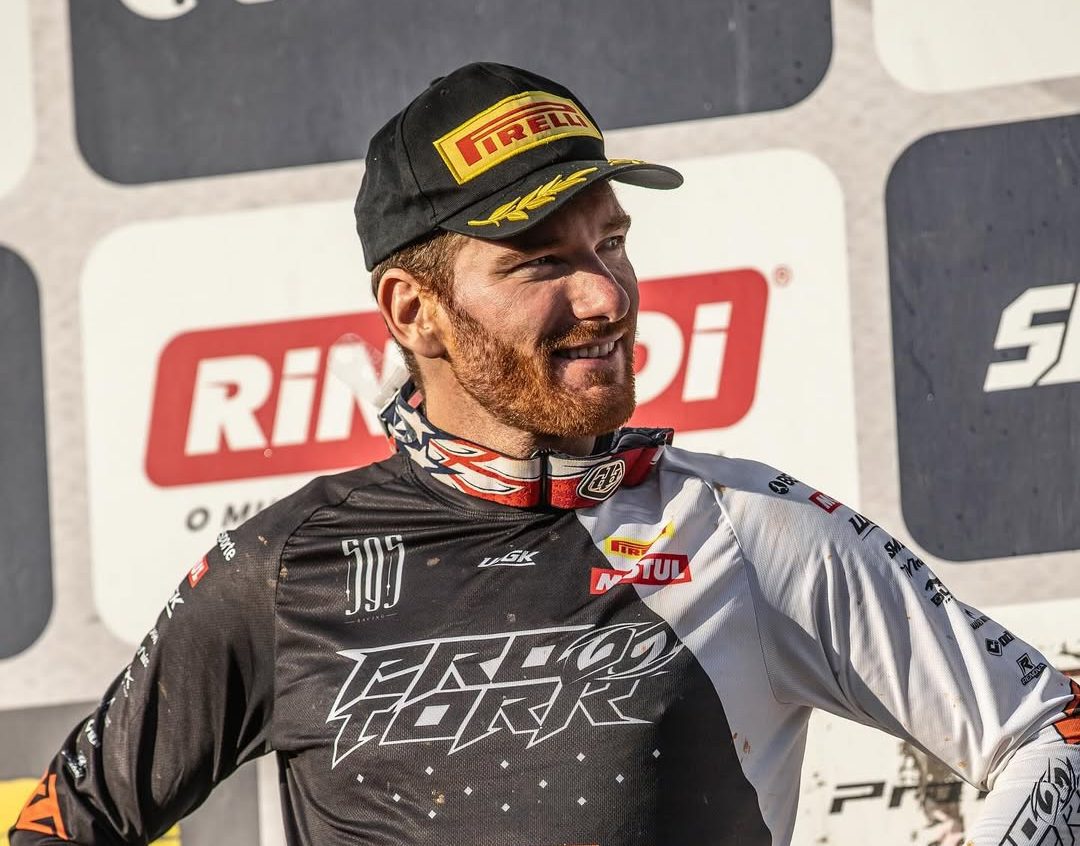
In France, we still occupy a central position in MX in Europe. It’s hard to imagine what it’s like in Brazil, and I didn’t expect that kind of setup.
Aranda: In Elite MX1, you’ll have GSM, Honda SR, a bit of TMX. Only the top 4 or 5 in Elite are in a team. The rest pay to ride, have no teams, struggle a bit more. In Brazil, even the small 85cc rider on our team is paid to ride. They all get paid to ride… Not necessarily huge salaries, but they have a salary, bikes, contracts, and they ride in official structures. For example, Yamaha takes young riders. There are many categories. If a young rider performs well in 125cc, they can get contracts, whether at Yamaha or KTM, to ride Junior, then MX2; it’s crazy.
Honestly, you have to see it. It’s mind-blowing. When Van Horebeek came, he was amazed. I think he’ll come back next season. I even hear that some GP riders have talked to teams here for next season, like Geerts and Coldenhoff. In two or three years, when they get tired, you’ll see them in Brazil [laughs]. Glenn, he finished 3rd in the MXGP World Championship this year, and he’s got nothing… When they get offers of $100,000 or $150,000 for 8 races, they’ll prefer Brazil over training like crazy to race in MXGP over 20 rounds for $200,000.
So, what’s the structure in Brazil? Is it the same system as in GP, with factories giving official programs to wealthy riders?
Aranda: I think for Yamaha and Honda, the brands give a lot to the teams, and there are really many sponsors alongside. We have KTM’s help, but I don’t know if they provide much financially. We also have very big sponsors in the team, like Protork. The gear I wear in Brazil is from a major team sponsor, for example. They give a lot compared to our sponsors in Europe. The amounts must be totally different. And it’s on TV there. My parents can follow me better in Brazil than in Elite because of YouTube live streams. It all works together.
Okay. I followed the first round. What surprised me was seeing—indeed—all the resources put in for so few riders.
Aranda: Last year, they did superfinals—MX1 and MX2 mixed. Then they said they’d make two categories, and everyone entered MX2, they even had to refuse people. So we ended up 15 riders behind the MX1 gate early in the year. The thing is, there’s 125cc, MX2 under 18—Juniors—then normal MX2, then MX1, and even MX3, which I could do too since it’s for veterans over 35 [laughs]. There are also women, many categories. Maybe MX3 could be grouped with MX1. At the first races, there weren’t many behind the gate; it felt like the GP of China [laughs].
They also seem relaxed. At the first round, I saw a guy cross the track in front of the gate at the “5 seconds” board [laughs]. You wouldn’t see that in the World Championship (laughs).
Yeah, it’s funny sometimes. You have the “15 seconds” board up, and the cameraman is still in front of you. You gesture to move, but he doesn’t care, he’s still there, and you’re ready at the “5 seconds” board [laughs]. Some adjustments are needed, but anyway, it’s really well organized, and the championship is heavily publicized, I didn’t expect that. It’s on TV, you do press conferences the day before, many journalists, videos, interviews everywhere. It’s crazy.
In terms of adaptation, was there anything more difficult than other things? You went early to get a feel, I think, but once serious racing started, did you face challenges?
Aranda: I was constantly trying to get used to the heat. I lived in São Paulo, and from May to September it’s winter there. Their winter, so it’s cool in the morning, 17–20°C in the afternoon. You’re fine. But when I flew to races, I had to ride in 40°C, full humidity—it was really hard for me. I didn’t expect to struggle so much with heat, especially since I rode all season without training, trying to catch up. There was also shoulder pain because I rested very little. It was tough. Honestly, it was still a hard season.
What’s the motocross culture in Brazil? Is it niche, or pretty developed? I sometimes had trouble gauging the number of spectators.
Aranda: There are tons of spectators. I think entrance is free, so it’s open to everyone, and people come. I don’t know how they finance it—TV, sponsors maybe. In France, motoclubs need ticket income to organize races and break even. Here, I think the promoter organizes, finds sponsors, and agreements with municipalities, for example. But there are really big crowds. And Brazilians love their locals. Since Santos fights for the title every time, they fully support him.
How does it go on track when you’re a foreigner racing against Santos? I saw some clashes between Santos, Rubini, and Van Horebeek this year. It looked heated sometimes. Are Brazilians tense about that?
Aranda: It was mainly heated between Rubini and Santos. But Stephen is well-liked there. They enjoy rivalries. They won’t make obscene gestures from the trackside like in the USA. It’s a little war, but fair. Locals welcome you well. Jeremy Van Horebeek was there to help Stephen, so Honda could try for the title. He helped Rubini, and Yamaha also recruited riders to help Santos. It was the same on both sides. I was just watching, and honestly, it was funny.
The Yamaha vs. Honda rivalry seems strong in South America, lasting years. By signing you, isn’t KTM trying to join this battle? I don’t recall a KTM rider fighting for the title in Brazil in recent years.
Aranda: For sure. I think it’s the first year a team is directly supported by KTM via Austria. Before, they didn’t really have a rider to compete for wins. Despite my injuries and lack of training, I was riding top 3 in races this year, even for wins. I had come back in form before getting re-injured, so it was a bit disappointing. But KTM clearly wants to establish itself and compete upfront. It’s great for the championship: three brands pushing hard, and teams are stacked with at least four riders each. Plenty of people, it’s cool.
A word on the tracks. I watched a few rounds. The surface seemed unique: red soil, greasy, super slippery, really wet, and it hardened quickly. What did you think of them?
Aranda: Exactly. I like it, because we’re used to slippery tracks at home. They prepare well, but the watering—oh man… they water like crazy, often right before the motos. It hardens gradually, becoming slippery. 40°C, full humidity, and you’re riding in the mud [laughs]. Special conditions, you have to adapt. I still enjoyed it. They have big tracks with huge jumps. Huge triples!
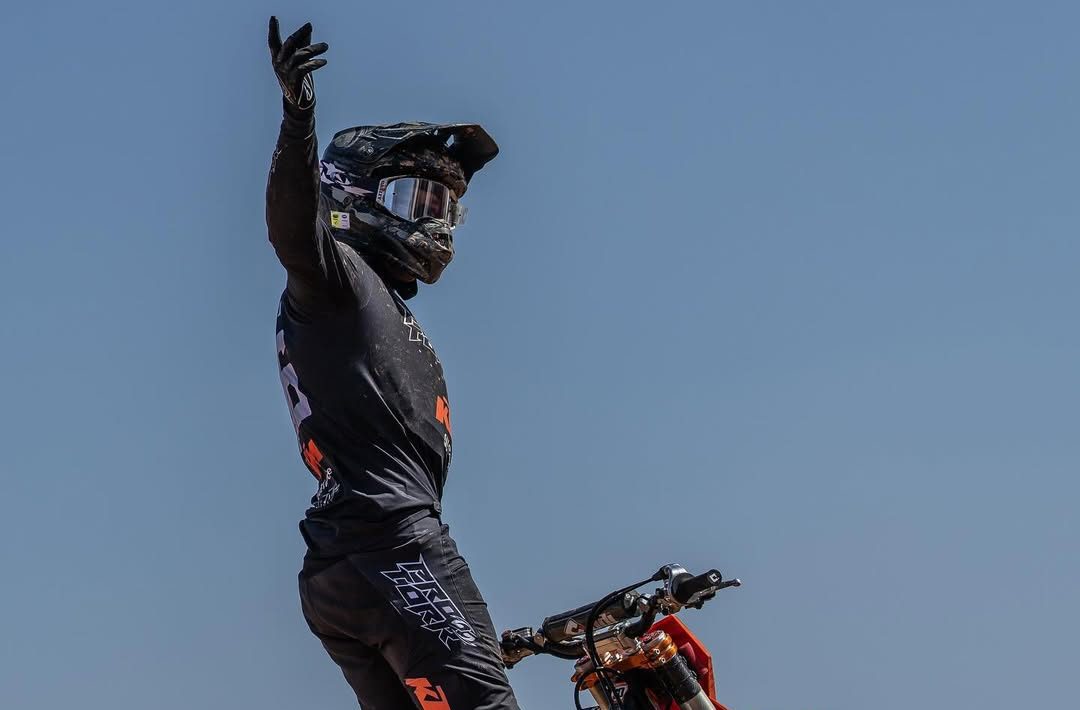
I was told it was impossible for Serge Guidetty to match the Brazilian offer. Without details, do you think a French team could offer you a competitive deal?
Aranda: Honestly, I don’t think so. We’re on good terms with GSM; if the difference hadn’t been so big, I’d have stayed in France. GSM is top-notch. As soon as I got the Brazilian offer, I told Serge. Even he said: “Go, straight away.” When you see a Coldenhoff finishing 3rd in MXGP discussing teams in Brazil, it speaks for itself.
What’s next? Originally, you were doing SX indoor, but Grenoble was cancelled, Douai cancelled, Paris SX conflicts with WSX. Only Lyon remains. Will we see you in France soon?
Aranda: In Lyon, yes. For now, I ride with GSM on WSX and Lyon. I’ll do Dortmund with Yamaha too. After, I’ll resume KTM to train MX for the 2026 Brazil season.
You extended with 595 Racing for Brazil 2026. Will the program stay the same? Any plans in France with GSM next year?
Aranda: I extended. For now, 2026 in Brazil on Arenacross and Motocross. For the rest, we’ll see.
You registered for the Indian Supercross. Trying everything new. It seems you’re embracing it like a young rider: “Let’s enjoy!”
Aranda: Yeah! [laughs] People say: “They go to India, Brazil, elsewhere.” But the team we signed with Maxime [Desprey] seems solid. They even contacted Serge for GSM parts so we’d be set there! You get a good paycheck, enjoy the experience, discover, ride good bikes—why not?! Max, Mickaël Lamarque, Calvin Fonvieille will be there. We’ll enjoy, explore India, try to perform. Awesome!
Australia never tempted you? Cedric Soubeyras is there this year. Some good riders. If you perform there, contracts shouldn’t be bad either.
Aranda: For sure. Last year they contacted me, but the Lyon SX conflicted with an Aussie race, and I was under contract with Serge and GSM. Similar this year: WSX or Australian SX—dates conflict. I’m committed to GSM; I can’t do everything: Brazil, WSX, India, France! But great for Soub’. A new championship, and he podiumed. Shows the level in France is good.
At this rate, you’ll all leave. We’ll need tickets to Brazil, Australia, or India to watch you ride.
Aranda: Exactly. Instead of Elite, all riders go elsewhere. Soub’ in Italy, Tixier in Germany, Bourdon in USA, Rubini with me in Brazil, Maylin, Pape… Already some riders who could push hard in Elite are in foreign championships. Easy to criticize, but that’s reality: the championship can’t retain its riders.
Today, you finish 4-4 in Elite, take home €900. If you’re in the south and the race is at Rauville-la-Place, you lose less staying home and buying four pains au chocolat. I joke, but it’s sad—Elite allows you to sign with top teams like GSM if you ride up front. Spots are rare and valuable. Alone, with a small budget, even with a crazy ride—4-5 behind GP Honda SR, Desprey, Malaval—you lose. You get €700–800 after crossing half of France, training 15 days at €20/day. The math is simple: you lose. Today, no one can afford to lose every time.
A guy who breaks himself, finishes top 5, 5th in Elite, will approach sponsors next year—nobody cares. He ends up going to the local shop for a small discount on his bike. That’s the real problem in French championship.
But the French championship also allowed riders to create careers, opportunities.
Aranda: Absolutely. I discussed this with Nico Aubin. The Elite then let you ride up front in GP. Back then, we rode on Saturday: free practice, timed practice, qualifying moto, warm-up, 3×25 min motos plus 2 laps on Sunday. A real weekend, you arrived in shape at GPs. Today, you barely ride Elite. I understand sponsorship in France is hard. Every club organizing faces challenges, it’s tough.
You must have gotten lots of messages from good French riders trying to get a spot in Brazil.
Aranda: For sure. Everyone messaged! Many contacted Hugo Basaula, the team manager. Coldenhoff called Hugo when he saw me with KTM, asking about budget. He wanted the USA, but stopped getting replies. He finishes 3rd in GP, now talks about Brazil…
WSX and Paris SX won’t cooperate. Dates conflict. Could have had a crazy lineup, but you, Maxime, Tixier, and some US SX stars go elsewhere. We all lose a bit.
Aranda: Exactly. I don’t know all the stories, but as French riders, it’s always a pleasure to race in Paris. A bit frustrating, but we signed for WSX, so we go there. Too bad for sport and show.
A word on WSX. Every time, it’s criticism. This year, we have Roczen, Savatgy, Anderson, Hill, Craig, Friese, plus Tomac, Deegan, Webb, Cooper…
Aranda: People are never satisfied. How many years have you heard: “Paris is not what it used to be”? At some point, what more do they want, seeing the Paris SX lineup? People love criticizing; same with WSX. Each year, more people, a nice lineup, yet criticism persists.
WSX opens doors to Stark Future, with their Stark in both categories. A divisive topic. What do you think?
Aranda: It’s just another bike, they worked well, competitive. No negative opinion. Another team, handlebars, opportunities for riders, good for everyone and the championship. Only issue: you don’t hear it on track. Could be tricky, especially with Vince Friese, aggressive on block passes.
The yearly question: you’re 36, will be 37. Still performing. Not ideal for family life, but with a Brazil, WSX, ADAC, and some SX Tours program, you could ride a few more years… Until when?
Aranda: I don’t know, but it’d be great to do nice seasons at 47–48, right? [laughs] Each year, I think: “Two more years, then I’m done.” Then I get WSX, Brazil opportunities. With Serge and GSM, we have fun, get along with everyone, mechanics, riders—it’s family. As long as I enjoy it, want to ride, get results, and keep training, I ride! Training happily, succeeding on weekends—you want to continue. Eventually, your body and mind tell you to stop. Some get scared suddenly, or don’t want to train, and quit. For me, I know it’s almost over. It stresses me, but I try to enjoy fully, because I don’t know how long it’ll last.
Physically, you feel it?
Aranda: Pain everywhere. Did both shoulders this year. Didn’t do upper body yet! Ankle arthrodesis, blocked ankle. Shoulders are fragile, I feel it. But once on the bike with the helmet, pain seems to vanish. Riding is an escape from pain.
Stopping—does it scare you?
Aranda: A bit. Feels like my first life ending soon. I’ve set things in place for after. But I always think I’ve lived my life in adrenaline, going everywhere. Races, stress, people expecting results. Experiencing crazy things in front of thousands in Paris, then suddenly a quiet life. And for us, it’s small scale. For big sports stars, probably worse.

